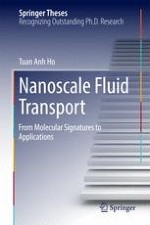2017 | OriginalPaper | Chapter
4. The Role of Thin and Mobile Electric Double Layer in Water Purification and Energy Storage
Author : Tuan Anh Ho
Published in: Nanoscale Fluid Transport
Publisher: Springer International Publishing
Activate our intelligent search to find suitable subject content or patents.
Select sections of text to find matching patents with Artificial Intelligence. powered by
Select sections of text to find additional relevant content using AI-assisted search. powered by
